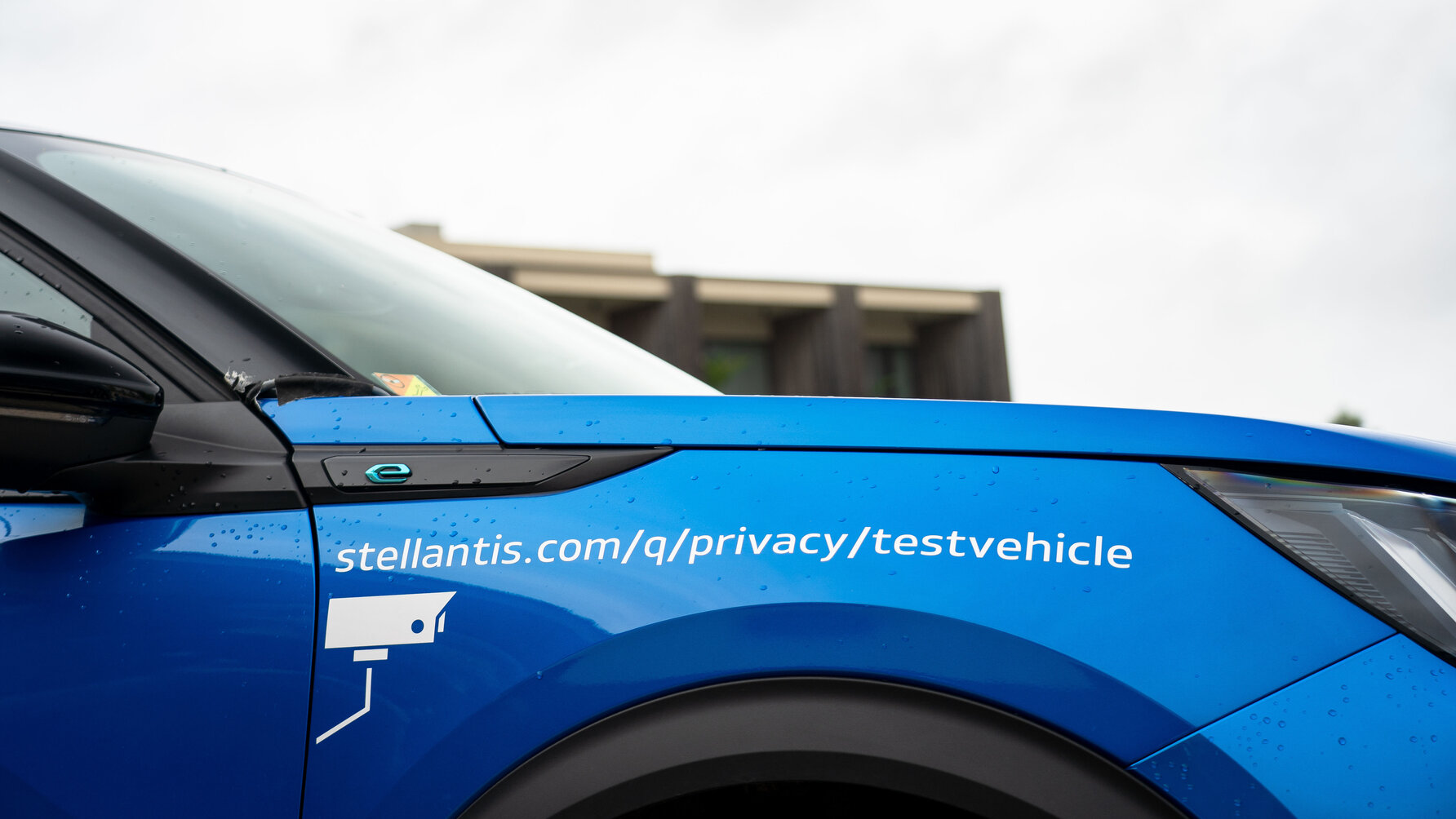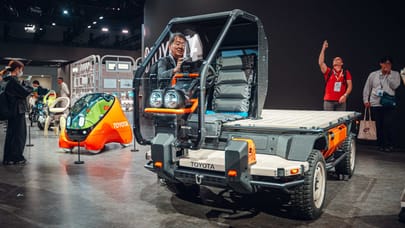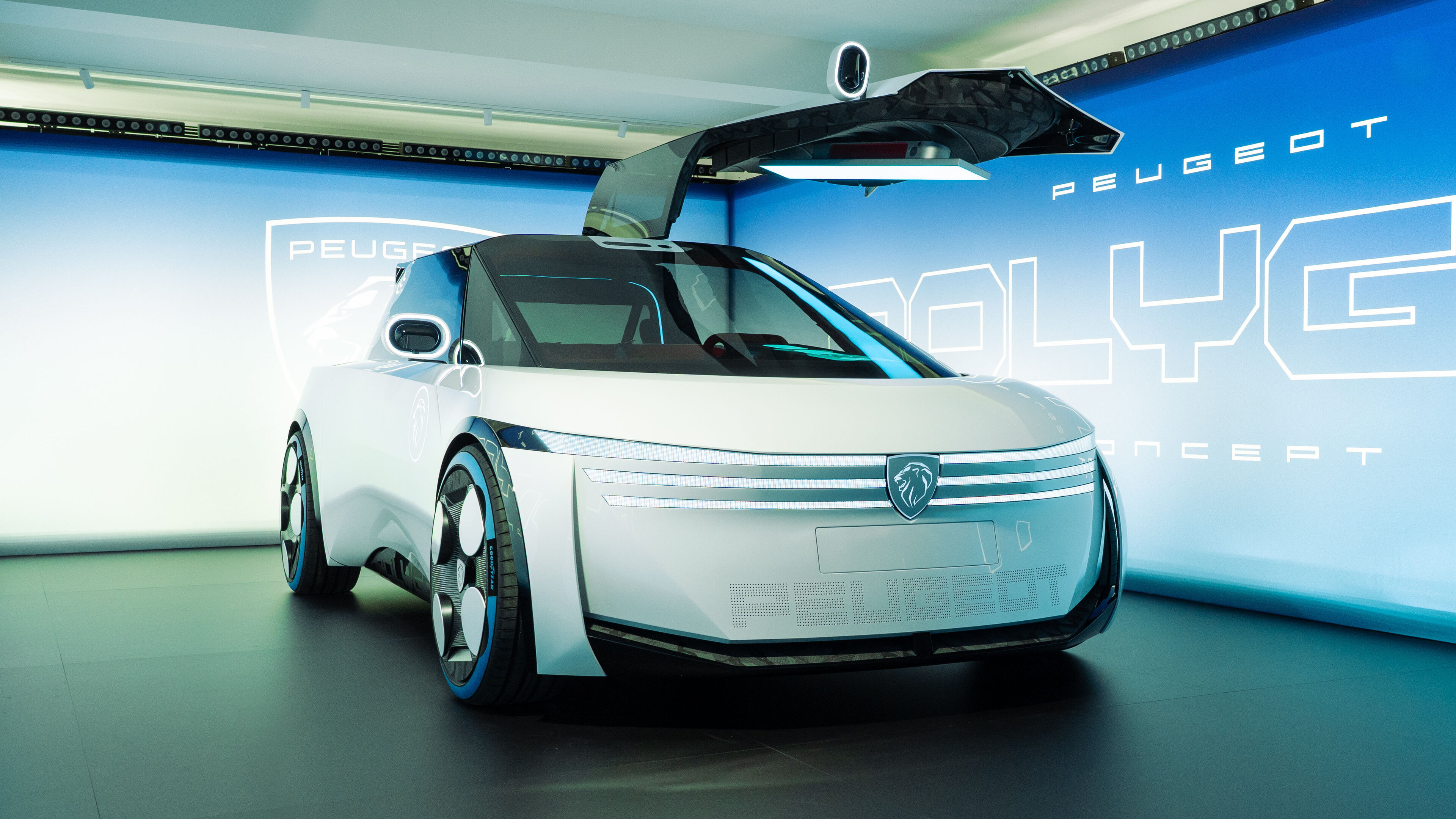
Here's why the Peugeot 'Hypersquare' is the biggest thing in your hands since power steering
Is this the future of motoring?
Like any self-respecting concept car, Peugeot's new Polygon has its share of crazy designer catwalk madness. So you'd be forgiven for inferring its oblong steering-'wheel', without any physical connection to the front tyres, is just another fantasy. But it isn't.
Steer by wire isn't a possibility. It's an inevitability. Sooner or later cars will have enough self-driving tech on board that the steering will be entirely self-powered. Already is, in the case of the Waymo and Tesla robocabs. Yet there's something theatrical and frankly silly about the steering wheel flailing around like a zombie under bidding of the electronics. It happens because the wheel is connected by hardware. A column.
So the inevitable direction of travel is to do away with the column. When we're driving, the wheel would do its wheel thing. And when the car's driving, not. In fact lots of concept cars have a wheel that folds away into a little dash compartment to make more space for the people.
But even when we are driving, this disconnected steering actually presents lots of possibilities. It can change the effective steering ratio. So at high speed on the motorway, it's less sensitive, making it easy to hold the lane. But at parking speed, you can go lock to lock without shuffling.
You can have comfort mode with a relatively gentle ratio, or sport mode where the car is more lively. One driver's 'lively' is another's 'twitchy', and that's fine when you can adjust it to taste.
It can filter out torque steer or shocks from potholes and ridges, and even make the car self-correct for crosswind disturbance. Finally, steering corrections could be programmed into the ESP, so that the car does its own opposite lock if you don't quite manage it.
If you've no need to twirl the wheel, the wheel doesn't actually have to be a wheel. The Tesla Cybertruck also has steer by wire, and a square-ish wheel. Infiniti launched a system on the Q50 a decade ago but with a conventional wheel.
Peugeot has now gone all the way and let its designers do a rectangle, or at least a round-cornered thing like an embiggened phone. They're calling it 'Hypersquare'. (Before you ask, unlike in the Cybertruck, the Tesla Model S yoke is connected to a conventional steering system which is why it is by common agreement an epic fail.)
OK, the Hypersquare handgrip stretches the definition of 'square', but let's go with it. Its shape avoids grazing the driver's legs at the bottom or obscuring the driver's displays at the top. Its central boss has room for more controls, and they're surprisingly easy to reach with your thumbs. The rear face of the rim is contoured, and there are thumb holes, so it's comfortable to hold and you can grip it in several different ways to suit yourself. Overall it allows a wider range of adjustability in your driving position, and frees up cabin space.
Top Gear
Newsletter
Thank you for subscribing to our newsletter. Look out for your regular round-up of news, reviews and offers in your inbox.
Get all the latest news, reviews and exclusives, direct to your inbox.
As the Polygon concept shows (above), Peugeot is once again choosing its small car as the vehicle for a big innovation. Look beyond the unfeasible concept-car staples of gullwing doors and crazy seats, squint a bit, and the Polygon is something of a preview of the next 208, which will be the first production car to host Hypersquare. Expect it in 2027.
Ever since the 205, Peugeot has indicated its next direction through its superminis. Not like Mercedes where the new-gen design and tech launches on the S-Class then percolates down the range. It was the 2012 Peugeot 208 that launched the iCockpit dash – low small wheel and high instrument pod. The current 208 was the first Peugeot with a choice of ICE or electric drive.
"This could be our Quattro," says Peugeot boss Alain Favey (below) of Hypersquare. He means a distinctive feature that won't necessarily be on all the firm's cars, but certainly on many. It launches with the next 208, only on the electric versions to start with, but later on ICE too. And across the Peugeot range. "Our plan only works if it really is popular," he says, because if it isn't, it becomes too expensive.

The new hardware is pretty straightforward. The steering rack is driven by a digitally commanded 12V motor. Well, actually by two of them, so that if one fails there's a spare. Failure? Let's call it redundancy.
Meanwhile, hidden in the dash just forward of the Hypersquare itself, is a smaller motor that provides feedback to the driver's hands. Sensors down by the rack measure forces from the wheels, so the system can send to the driver a replication of forces that signal grip loss, without sending the undesirable vibrations and torque steer.
Between the rack part and the cabin part there's no connection except wires. Which makes packaging easier around the powertrain (could be ICE or electric), seals up a noise path, and also eases the transition between left and right-hand drive. It doesn't use significantly more power, or weigh much more, than a normal steering setup.
Cost? Not too bad, they say. There's a lot of Peugeot IP in some of the features and the programming, but the actuators are from suppliers and their suppliers will spread the set-up cost by selling to other manufacturers. Certainly front-wheel steer-by-wire is cheaper than four-wheel steering. And 4WS gives only a tamer version of just some of the benefits.

While the Hypersquare works best in a cockpit that's designed around it, here I'm testing the idea in one that isn't. It's an E-2008 mule that has been hacked about to include the steer-by wire. For comparison I have an otherwise identically specced showroom E-2008 with a normal wheel and rack.
At manoeuvring speed, you turn the Hypersquare just 170 degrees to get from straight-ahead to full lock. Just cross your hands – no shuffle. So I head out of a perpendicular parking space onto a road and sure enough I overdo it, nearly swinging back into the kerb. The first sharp turns and junctions are a bit odd too. It feels like the back of the car is slithering outward on castors. After 10 minutes of that, and some slaloms and a parking test, it already feels not just easier but pretty natural. Driving the standard car afterwards, it's like the steering rack is connected to the wheels by old knicker elastic.
That said, twirling the steering at parking speed is pretty much a first-world problem. I'd be pretty brassed off if, for the sake of a slight easing of this matter, I had to suffer odd steering at the speeds where driving is actually enjoyable.
So let's go faster. I'm at a car industry test track I happen to know well. It has a decent straight, long corners of most speeds, sections of cobbles and zitty tarmac, plus a couple of blind brows that test your confidence in what the car is telling you.
In the quick corners, the place I most expected to feel bamboozled by this highly digitised experience, it's impressively natural. You can place the car accurately, and there's a real sense through your hands of the front tyres' grip. On the fast straights it runs true, with good central weight.
At speed, in the comfort mode, the ratio is 21 to one. That is, you'd have to run the steering 21 rotations to get the front wheels to turn one turn about their vertical axis. (Of course they never get that far because they'd hit the lockstops. It's just how steering ratio is measured.) Most regular steering is around 15:1, which is the Hypersquare's ratio at speed in its sport mode. The Hypersquare at parking speed is as quick as 5:1.
One of the slow corners has an imperfect surface at its exit. My right foot is on the floor. In most cars, including the unmodified standard E-2008. there'd be a rumble through the steering wheel. Not here – the by-wire system filters this out, so everything feels calmer. It's like a bigger, higher-quality car.
But it isn't perfect yet. Or I'm not yet perfectly used to it. Braking for a sharp bend, I always turn in too much. That's because the steering gets more direct as the car slows. So for a fixed hand position, the front wheels turn sharper as I lose speed. It feels like the car is kneeling on its outer front tyre and tucking in too much.
Arthur Megy (below) is the Peugeot engineer in the passenger seat. He's spent eight years developing the system, and seems remarkably sanguine about my off-the-cuff criticism of the way it turns into tight bends. He says it feels that way because it's just a mule – the anti-roll bars and bushings haven't been re-set to match the way the steering now behaves, so they're out of sync. I can see what he means, since accelerating out of a bend, when the steering is getting more indirect, you'd expect the opposite sensation, but it feels natural, I suspect because the rate of change of roll is lower.

As we drove it, there was nothing to report on instruments. They'll certainly be redesigned to take advantage of the flatter top of the Hypersquare unit. Peugeot has shown concepts with revolving drums on top of the dash, and the Polygon projects the displays onto the windscreen by a matrix of micro-LEDs in mirrors on the dash top.
Peugeot is also being coy about controls in the Hypersquare itself – the rims of the four circles can be controls for volume, cruise and the like. At the moment there are no regeneration paddles behind the Hypersquare, but there's no reason not to be, the engineers say.

That eight years Megy spent on the system is almost his whole career. He's still in his twenties. He's passengered with several different untrained drivers on the system, and says the quickest to adapt are young drivers who've done a lot of gaming. For sure if you've steered by keypad or joystick this'll seem wholly normal.
And actually, it opens up the possibility of car as arcade. When the car's parked, the Hypersquare is driven by its motor back to the central position, because it's disconnected from the wheels. So it could easily act as controller for driving games played on the car's touchscreen.
Which is why Peugeot's CEO Alain Favey thinks it's such a crucial system. It makes Peugeot relevant to tomorrow's car-buying generation. "We are playing a role in the future of cars. In 20 years time everyone will be offering this."












